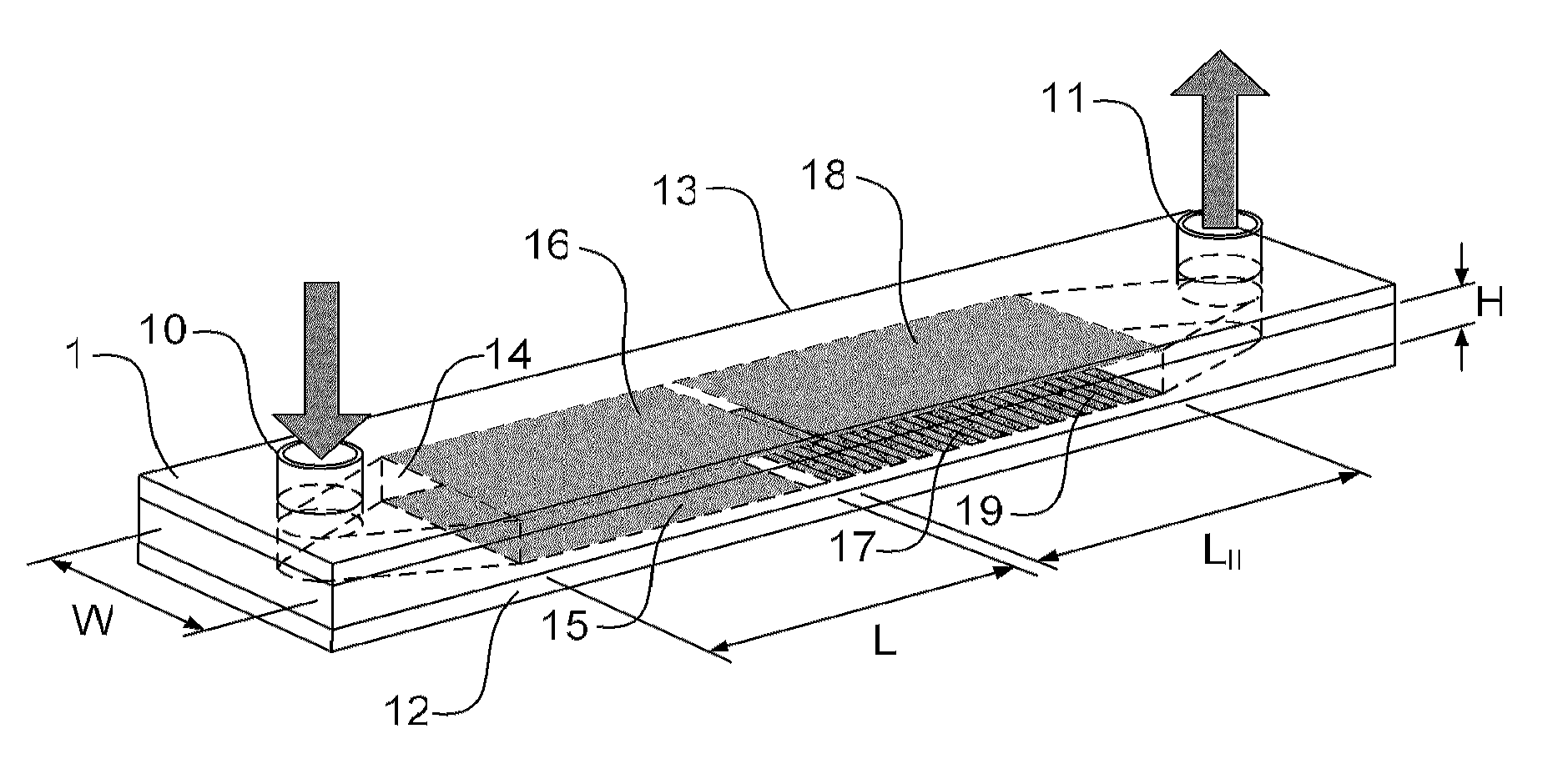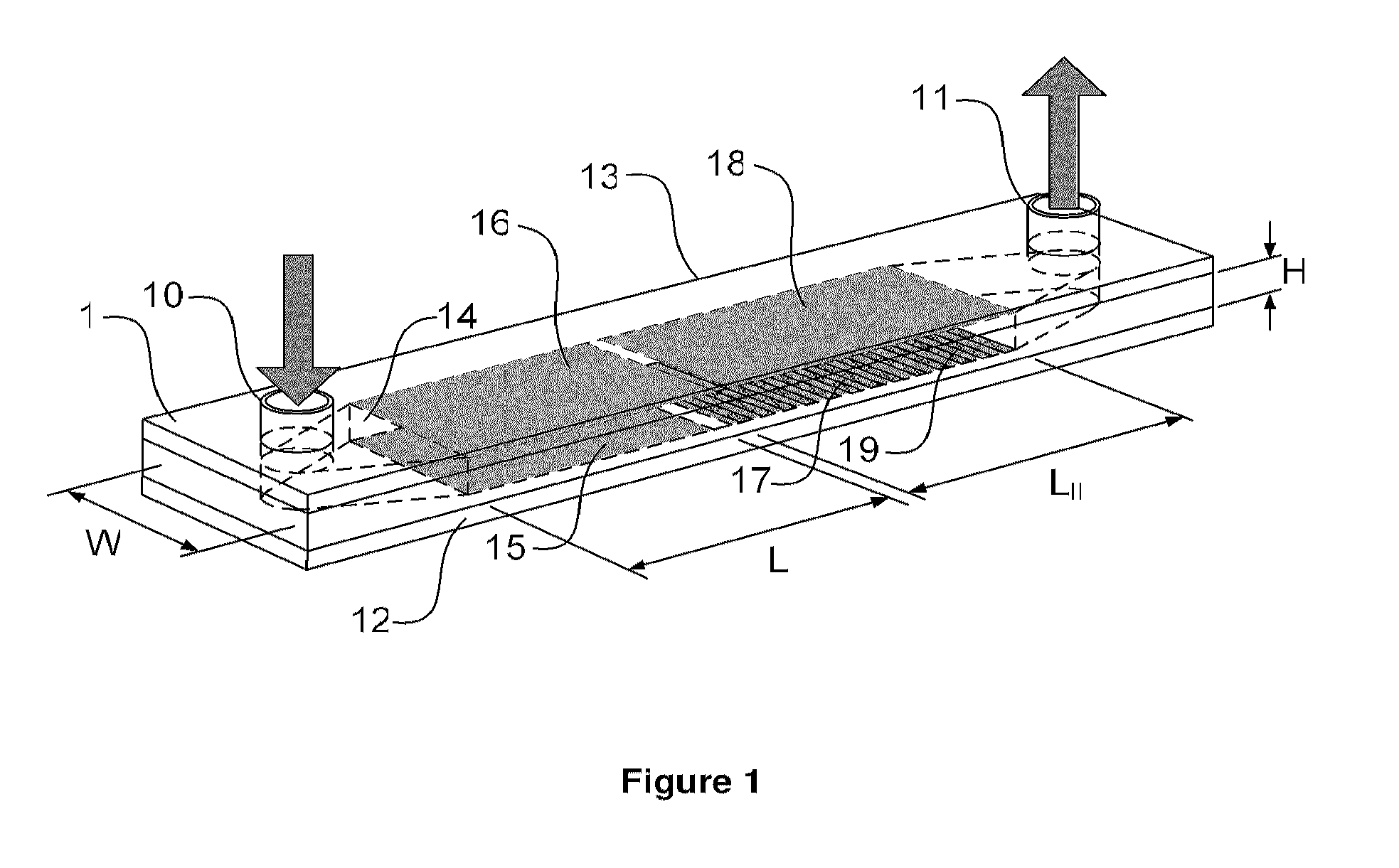Cell concentration, capture and lysis devices and methods of use thereof
a cell concentration and cell technology, applied in the field of microfluidic diagnostic devices, can solve the problems of inability to easily afford to automate in a cost effective manner, increase in sensitivity or decrease in assay time, and can have life or death consequences for patients
- Summary
- Abstract
- Description
- Claims
- Application Information
AI Technical Summary
Benefits of technology
Problems solved by technology
Method used
Image
Examples
example 1
Preparation of Immobilization Regions Comprising Antibodies or Nucleic Acid Probes
[0303]In one example, a solid support is prepared for the immobilization of either an antibody recognizing a cell surface or a nucleic acid probe for binding intracellular nucleic acids. Polished aluminum bottom plates were cleaned with water then rinsed twice with methanol and air-dried. 2% 3-Aminopropyl Triethoxysilane was prepared in 95% Methanol 5% water and the plates were immersed in silane for 5 min. Then, the plates were rinsed in methanol twice, air-dried and baked at 110° C. for 10 min. After cooling, the plates were immersed in 2.5% glutaraldehyde homobifunctional crosslinker in phosphate buffered saline, pH 7.4 for 1 hour, thoroughly rinsed in water and air-dried. The reaction zone of the microfluidic channel was defined by applying a double-sided adhesive spacer on the treated surface of the aluminum plates. Amino-labeled capture oligonucleotide probe of 1 uM final concentration which reco...
example 2
Preparation of Immobilization Regions Comprising Antibodies and Nucleic Acid Probes
[0304]In a second example, the above protocol was adapted to support the co-immobilization of antibody and nucleic acid probes within a common immobilization region. The method is schematically illustrated in the flow chart shown in FIG. 14, as henceforth described. 1 μM final concentration of biotin-labeled capture oligonucleotide probe was mixed with 20 μg / mL of Streptavidin (Sigma) in 10 mM carbonate buffer pH 9 for 5 min, and then goat anti-E.coli antibody (Abcam) of 50 ug / mL final concentration was added. The antibody and probe mixture was spotted on the reaction zone of prepared aluminum plates, therefore forming a common immobilization region, and incubated in a humidified chamber at 4° C. overnight. Unbound materials were washed from the surface with water and the reaction zone was blocked with 0.2% bovine serum albumin and 0.1% Tween-20 in PBS pH 7.4 at room temperature for 1 hr. After washin...
PUM
| Property | Measurement | Unit |
|---|---|---|
| thickness | aaaaa | aaaaa |
| dielectric constant | aaaaa | aaaaa |
| ionic strength | aaaaa | aaaaa |
Abstract
Description
Claims
Application Information
 Login to View More
Login to View More - R&D
- Intellectual Property
- Life Sciences
- Materials
- Tech Scout
- Unparalleled Data Quality
- Higher Quality Content
- 60% Fewer Hallucinations
Browse by: Latest US Patents, China's latest patents, Technical Efficacy Thesaurus, Application Domain, Technology Topic, Popular Technical Reports.
© 2025 PatSnap. All rights reserved.Legal|Privacy policy|Modern Slavery Act Transparency Statement|Sitemap|About US| Contact US: help@patsnap.com



